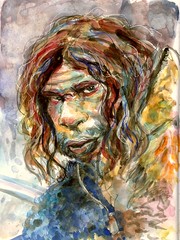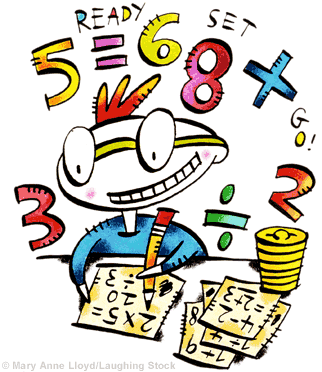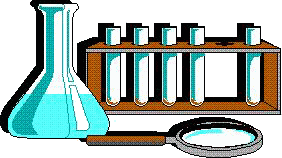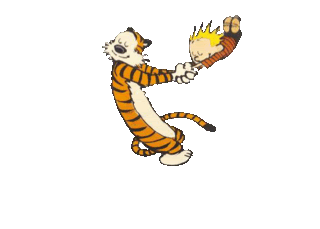Expect the moon to be 30% brighter and about 14% larger than normal. Also expect that it will have a deep rusty-red color. "Blood moons," as they are sometimes called, have had a bad rep down through the ages--not to worry, though. Their color is simply caused by sunlight being scattered by the Earth's atmosphere.
Visibility Map
At 9:07 EST the partial eclipse begins, and at 10:11 the full eclipse will be visible for approximately 1 hour and 13 minutes. Only eastern Asia and Australia will miss it completely.
Sorry, guys!
Most "Super" Supermoon of the Year
ASSIGNMENTS
FOR THE WEEK OF
September 28-October 2

SCIENCE
. . .and the Scientific Method
Tuesday: Let's "RAP" this thing up:

Get ready for a great way to remember the steps of the scientific method and learn a bit of history, too! You'll meet Galileo Galilei whose cannonball experiment got him in trouble with the church. . . Say what??
We'll start first with a Rap, then a little explanation with the help of interactive lyrics, and then a quick review. Look HERE for everything you'll need to be a Scientific Method Master!
Here's a cool "MOON-THEMED" experiment using the Scientific Method that was carried out by astronauts on Apollo 15 in 1971:

According to Galileo, a feather (if air wasn't pushing on it) would fall at the same speed as a hammer. Well, Apollo 15 astronauts brought a hammer and a falcon feather to the moon in 1971 to test Galileo's theory. (They chose a falcon feather because "Falcon" was their lunar module's name.)
While standing on the moon (no air), one of the astronauts dropped the hammer and falcon feather at the same time, and, well, check out what happened:
Atta way to go, Galileo; thanks, Apollo 15!
FYI: Apollo 15 was the 9th manned mission in the Apollo program and the 4th to actually land on the moon. It was also the first of the Apollo "J" missions (long stays on the moon) to have a greater focus on science than ever before. The astronauts spent 3 days on the moon and a total of 18.5 hours outside the spacecraft. This mission introduced the Lunar Roving Vehicle! At the time, NASA called it the most successful manned flight ever achieved.
Information from: "Apollo 15." Wikipedia. Wikimedia Foundation, 20 Sept. 2015. Web. 27 Sept. 2015. .
INDEPENDENT PROJECT
YOUR TURN: This is a home project.Look HERE or in classroom resources to find an experiment you can conduct that demonstrates the scientific method. Use THIS worksheet to organize your experiment. Get your materials together and practice it (at home) before you share it at school. Important guideline: there will be no two alike. Let's have a crazy demonstration day on (Due date:) Tuesday, October 6.


 SOCIAL STUDIES
SOCIAL STUDIESFarewell to you, whose story's told
On limestone walls in caves of old
What made you choose to illustrate
With such detail, to innovate?
Stone tools and weapons that we've found
In great abundance in the ground
Signified ability
To make and plan creatively.
What it took to stay alive--
The immense effort to survive--
The hunter was the hunted, too
So strategies were used by you.

That proved you had a thinking brain
And common goals, you'd much to gain
By cooperating willingly --
A shared intentionality.
Culture helped you to evolve
Diversify and problem-solve
Your vast, resilient human niches
Developed through natural processes.
~ Mrs. M.
Monday: Prehistory B.H.T. today. Follow the [very simple] directions to complete. Good luck!
NOW IT BEGINS. . .
OUR NEW FOCUS IN SOCIAL STUDIES IS ON THE FIRST GREAT CIVILIZATION, KNOWN AS MESOPOTAMIA.
~
Mesopotamia is a name, interestingly enough, later given to the people of the "Fertile Crescent" by the Greeks. These people lived in a haphazard climate--one where summer temperatures reached as high as 110 to 130 degrees Fahrenheit. Eight months of the year were dry, turning the Tigris and Euphrates rivers a sluggish brown. Winter was the rainy season. Melting snows from the Taurus and Zagros Mountains also drained into the rivers, causing them to flood, often destructively. Young travelers, we are about to enter this unpredictable and often unfriendly environment. Never fear, we'll travel together. Better get packed!
Ahh, the land of the
first great civilization...
Advance to this PREZI for further instruction...
Friday: Welcome, ancient travelers, to the Fertile Crescent, also known as Mesopotamia, which means land between two rivers. You are about to embark on an important information-gathering quest in the world's first great civilization. This will be one of many we will visit this year. Complete this Scavenger Hunt in the packet I provide by using the links below. This is an important task, young travelers. Safe journey; do well!
SUMER -- BABYLON -- ASSYRIA -- HOMES -- SCHOOLS/EDUCATION -- CLASSES OF PEOPLE -- and. . . wait for it. . . -- GODS, GODDESSES, DEMONS, AND MONSTERS OF MESOPOTAMIA
LANGUAGE ARTS
Inside Outside
Monday & Tuesday: You have (hopefully) finished reading your book for September. (Monthly books -- one at the very least -- are a requirement in my class.) Beginning today in Language Arts, we'll create a three-fold brochure advertising your book using pictures that you have found or drawn. This brochure should really persuade people to read it, so give it all you've got!. Your brochure should contain the following (refer to the picture above if needed):- A Front Cover providing the TITLE, AUTHOR"S NAME, and an ILLUSTRATION of a favorite scene from the book.
- An Inside Flap (when you lift up the cover) that lists the MAIN CHARACTERS with a BRIEF DESCRIPTION of each (who they are in the story). Write the words Main Characters at the top of this flap.
- An Inside Left Panel (see illustration above) on which you write Setting and describe WHERE and WHEN the story takes place. Be as descriptive as possible. This may include an illustration or map.
- An Inside Center Panel on which you write Summary and briefly TELL WHAT THE STORY IS ABOUT. (Summarize don't retell. . .)
- An Inside Right Panel on which you tell about the most EXCITING, FUNNY, or INTERESTING part of the story. Write Climax at the top of the panel.
- A Back Panel on which you write a RECOMMENDATION for the book. Did you like it? Use details to explain why. Give it a rating from 1 - 10. Write Recommendation at the top of the panel. Write your Name at the bottom of this panel.
Plan on creating a decorative border on each panel.
Neat & colorful borders make it look so-o very spiffy!!
For today:Neat & colorful borders make it look so-o very spiffy!!
- Plan out how you want your brochure to look on a piece of computer paper.
- Then, on lined paper, write and edit your information for characters, setting, summary, climax and recommendation in preparation for the next step, which is. . .
Wednesday: Hmm. . . not reading, huh? We're setting up Book Report Contracts for October to help you out. Be prepared for random checks. Parent signatures are required at the end of the month. Keep these in your trapper keepers!
Keep working on your September brochure -- it's due Friday!
Thursday: Brochures--Get them done! Due tomorrow!
MEANWHILE:
 Thursday & Friday: We're going to delve into our innermost fears (well, kinda). What are you scared of? For me it's spiders. (Ewww!) For some of you, I'd say it's homework. (Am I right or am I right??) It could be a lot of things, real or made-up. This is a fun poetry assignment where we write 4 couplets on the scary thing of our choice. We'll illustrate them after we're finished and hang 'em up!
Thursday & Friday: We're going to delve into our innermost fears (well, kinda). What are you scared of? For me it's spiders. (Ewww!) For some of you, I'd say it's homework. (Am I right or am I right??) It could be a lot of things, real or made-up. This is a fun poetry assignment where we write 4 couplets on the scary thing of our choice. We'll illustrate them after we're finished and hang 'em up! Let's confront those fears!
 MATH
MATHMonday: 1.8 Division of Decimals by Whole Numbers. Complete Share & Show. Homework pages that follow should be removed and put in homework folder to complete for tomorrow.
Let's start with a preview video:
Unit 4
Test on Friday

READING
Monday & Tuesday: See Language Arts, above.
Wednesday: SSR with your new books from the Library. Get into those great books! Fill out CONTRACTS!

Thursday: Introduction to Jazz and the 1930s! We're starting off with a whole-class reading group and enjoying one of my favorite books--Bud, Not Buddy, by Christopher Paul Curtis. -- You can read it online HERE.
Friday: Brochures not done! Waz-up? You have until Monday. Get-r-done, guys! Meanwhile, we're setting up contracts for October's book. USE THEM!
Visibility map Science image astronaut gif cheerleader gif megaphone gif independent project guy fire animated gif Neanderthal fire animated gif Mesopotamia banner Ancient Mesopotamia map Fertile Crescent map green decorative design brochure gif afraid gif math clipart Spelling gif Boy reading gif
trapper keeper image Bud, Not Buddy image
















































